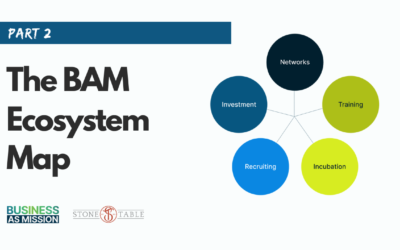Two Bottom Lines

This is a story of a Business as Mission (BAM) practitioner on the field using business as a mechanism for planting the church in areas of the world you can’t go with traditional missionary methods. In order to protect the work being done there, we will not share the names of the workers or the specific locations.
When I began our BAM (Business as Mission), I had no prior warning that I was starting a business that would do over $20,000 in sales and employ over 40 people in its first year. I simply wanted to start a project that would help us better engage the community, but I quickly realized that I actually had a real business on my hands!
Overnight, I began scrambling to educate myself on how to run a business, or more specifically a BAM. I searched for any books, podcasts, or classes that could teach me what I needed to know since I had very little prior business training. I also started to watch Shark Tank a lot!
Many of these resources helped me figure out how to think with a business mind, which is needed and good. They helped me start off well and grasp much of what I didn’t know. One thing became quite clear though, all of these business resources were geared toward one bottom line: making money. After all, that’s what business is for, right?
Yes and no. I am adamant that we have two bottom lines: Profit and People.
How can I run a business with two bottom lines? It does get complicated at times. Another BAM owner once told me, “I’m willing to have the most inefficiently run business in the world if that means I’ve created lots of jobs for people.” That struck me.
Part of running a BAM (a big part I would contend) is creating jobs and connecting with people. That’s the “soul mission.” If we only care about one bottom line, profit, we miss this in the big picture.
Do we want our BAM to be profitable? YES! Should it be profitable? YES! But not at the expense of the people it serves and engages. That’s the difference between a BAM and other business philosophies. We see the souls of people as part of our ultimate bottom line. We define success based on how well our BAM is opening doors to reach people.
It is easy to get distracted and use all of our efforts to create an efficient business structure that makes a good profit, but the real work is in creating a business model that builds good relationships with those that we are able to connect with through our BAM. We have two bottom lines.



